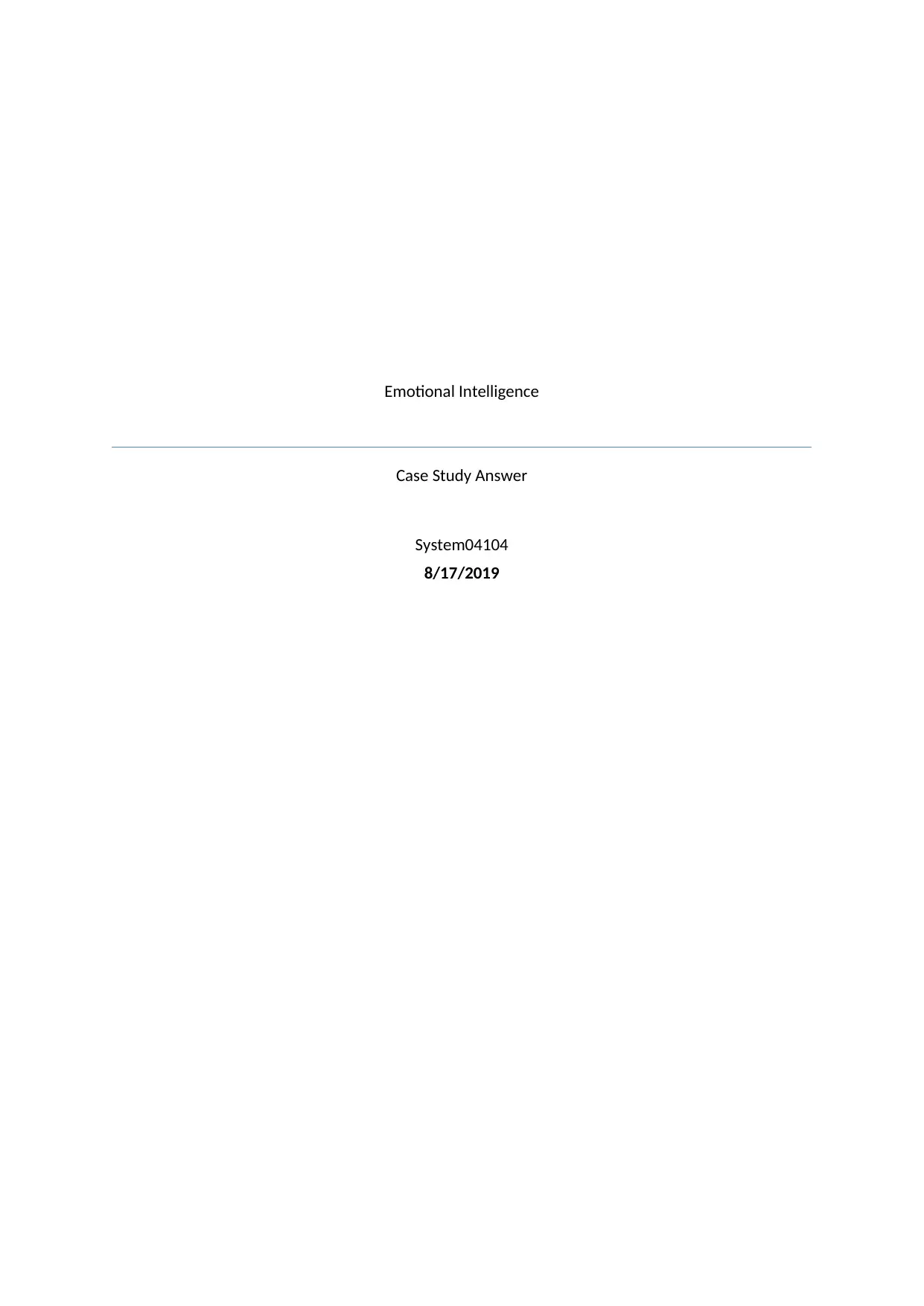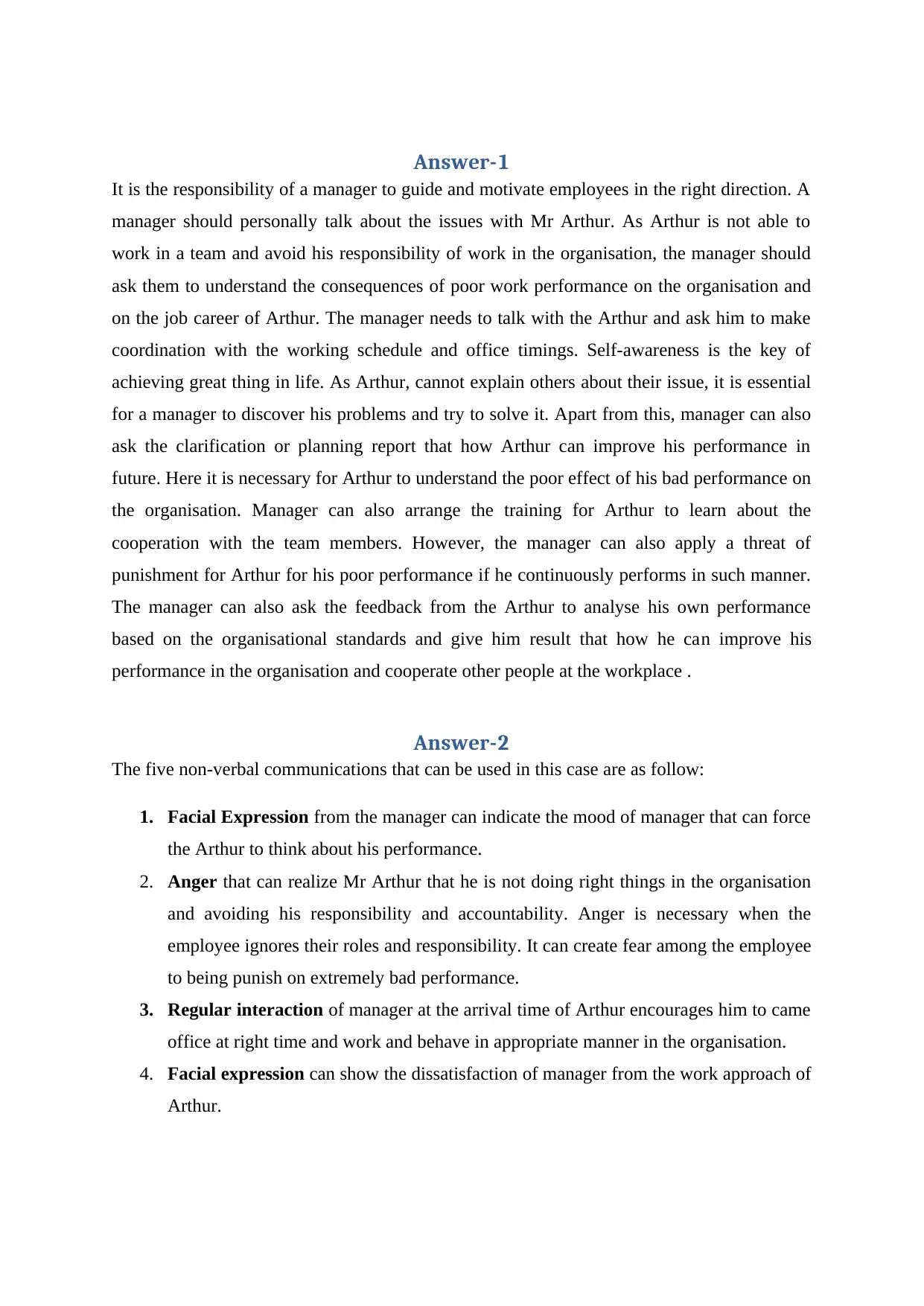Case Study: Improving Performance Through Emotional Intelligence
VerifiedAdded on 2022/09/22
|3
|435
|21
Case Study
AI Summary
This case study delves into the application of emotional intelligence within a workplace setting, specifically addressing a scenario where an employee, Mr. Arthur, exhibits poor performance and struggles with teamwork. The assignment explores the manager's role in guiding and motivating the employee, emphasizing the importance of direct communication, understanding the impact of poor performance on the organization, and establishing clear expectations. The solution highlights the necessity of self-awareness for the employee and suggests strategies such as providing feedback, offering training, and implementing disciplinary measures if necessary. Additionally, the case study identifies five non-verbal communication techniques that a manager can utilize to influence the employee's behavior and improve their performance. These techniques include facial expressions, anger, regular interactions, and eye contact, all aimed at conveying the manager's expectations and concerns effectively.
1 out of 3









![[object Object]](/_next/static/media/star-bottom.7253800d.svg)